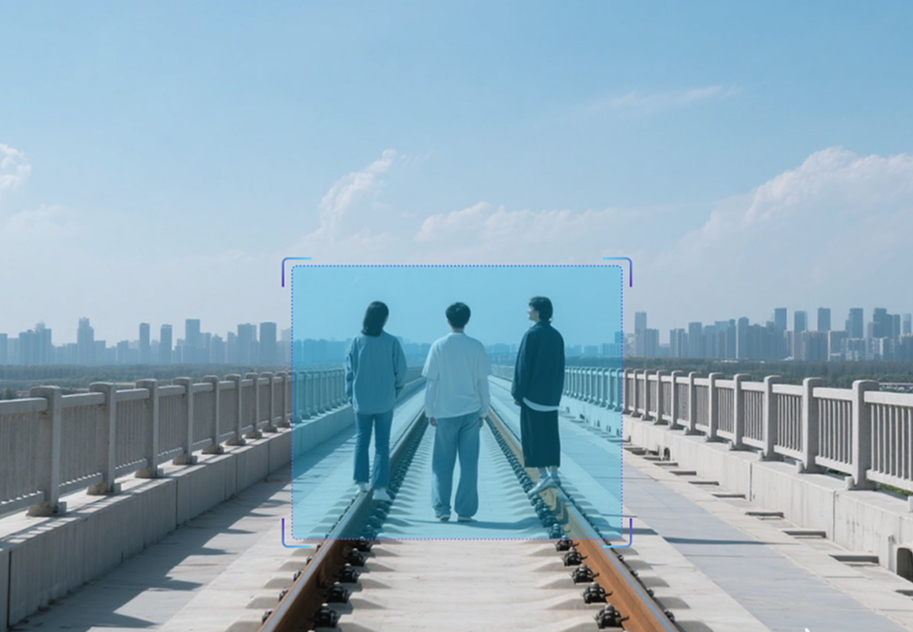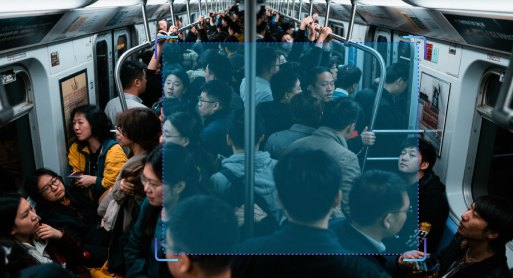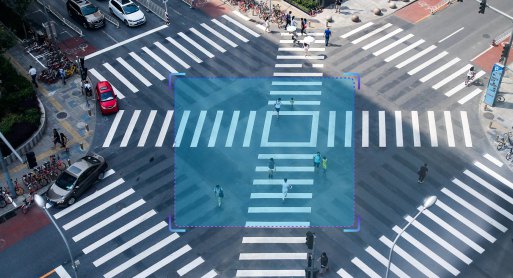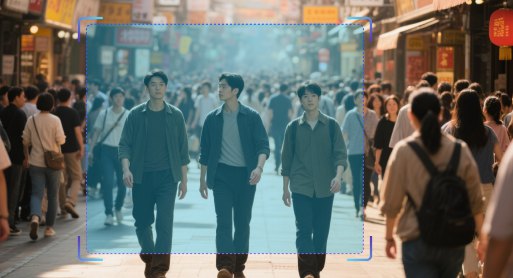
Unauthorized Crowd Intrusion Detection

Algorithm Introduction
Utilizing AI vision algorithms to detect abnormal intrusion behaviors in crowds through analysis of video streams from scene-specific cameras, with automated alerts triggered based on configurable crowd parameters. This system provides dynamic movement pattern analysis for intrusion scenarios, enhancing smart security operations.
- ● Camera requirements:
- a) Installation height: 4-6 meters, with video resolution of 1080p (1920×1080) requiring minimum human height of 50 pixels
- b) Detection parameters: >30 pixels per head, <90 pixels per body, with ≤50% head occlusion allowance
- ● Lighting conditions:
- a) Daytime outdoor environments; performance degraded under nighttime conditions or strong backlighting causing low target visibility
- b) Normal indoor lighting; accuracy compromised under insufficient illumination
Application Value
-

Urban Roadways
At key locations along urban roads, algorithms identify pedestrians who enter motor vehicle lanes or restricted zones, providing timely alerts to ensure road traffic safety. -

Parks/Campuses/Commercial Zones/Tourist Attractions
For enclosed areas and hazardous zones in public spaces, this algorithms automatically identifies unauthorized individuals, assisting managers in maintaining order and security. -

Bus/Subway Stations, Railway Exits
For areas such as platform edges and equipment rooms, the system rapidly identifies and alerts authorities to any unauthorized entry, ensuring passenger safety and operational order.
FAQ
-
Algorithm AccuracyAll algorithms published on the website claim accuracies above 90 %. However, real-world performance drops can occur for the following reasons:
(1) Poor imaging quality, such as
• Strong light, backlight, nighttime, rain, snow, or fog degrading image quality
• Low resolution, motion blur, lens contamination, compression artifacts, or sensor noise
• Targets being partially or fully occluded (common in object detection, tracking, and pose estimation)
(2) The website provides two broad classes of algorithms: general-purpose and long-tail (rare scenes, uncommon object categories, or insufficient training data). Long-tail algorithms typically exhibit weaker generalization.
(3) Accuracy is not guaranteed in boundary or extreme scenarios.
-
Deployment & InferenceWe offer multiple deployment formats—Models, Applets and SDKs.
Compatibility has been verified with more than ten domestic chip vendors, including Huawei Ascend, Iluvatar, and Denglin, ensuring full support for China-made CPUs, GPUs, and NPUs to meet high-grade IT innovation requirements.
For each hardware configuration, we select and deploy a high-accuracy model whose parameter count is optimally matched to the available compute power.
-
How to Customize an AlgorithmAll algorithms showcased on the website come with ready-to-use models and corresponding application examples. If you need further optimization or customization, choose one of the following paths:
(1) Standard Customization (highest accuracy, longer lead time)
Requirements discussion → collect valid data (≥1 000 images or ≥100 video clips from your scenario) → custom algorithm development & deployment → acceptance testing
(2) Rapid Implementation (Monolith:https://monolith.sensefoundry.cn/)
Monolith provides an intuitive, web-based interface that requires no deep AI expertise. In as little as 30 minutes you can upload data, leverage smart annotation, train, and deploy a high-performance vision model end-to-end—dramatically shortening the algorithm production cycle.





